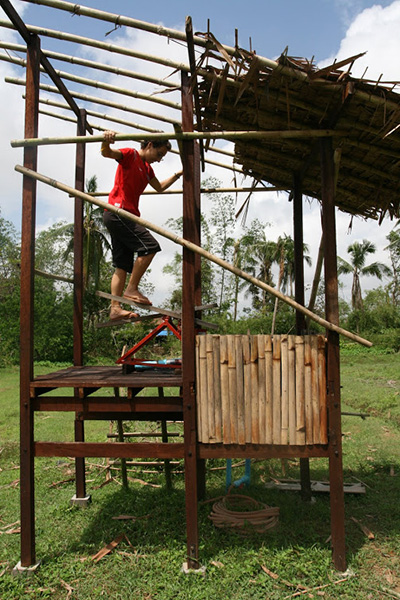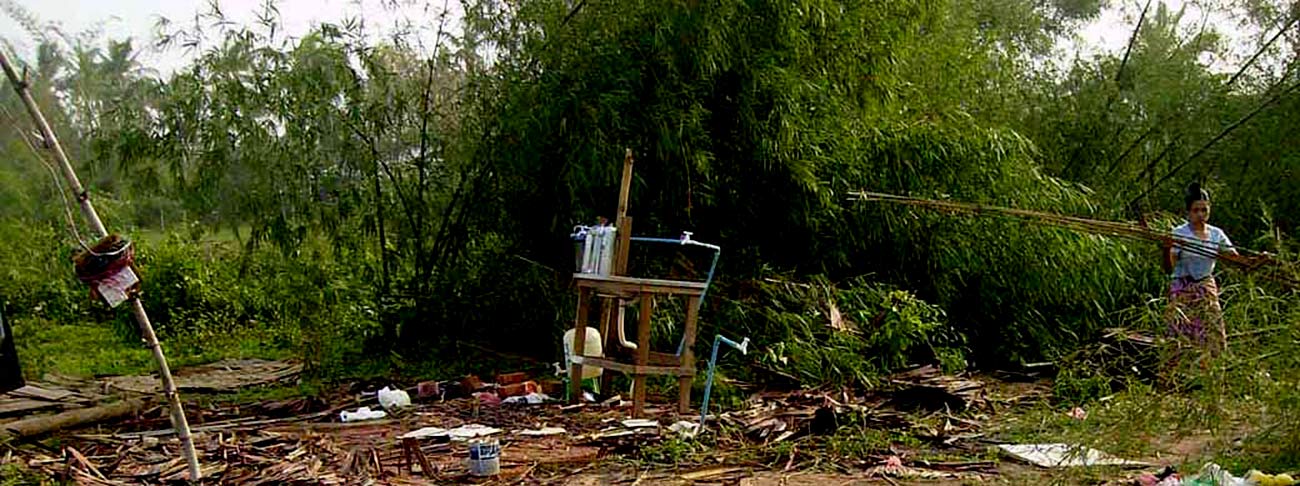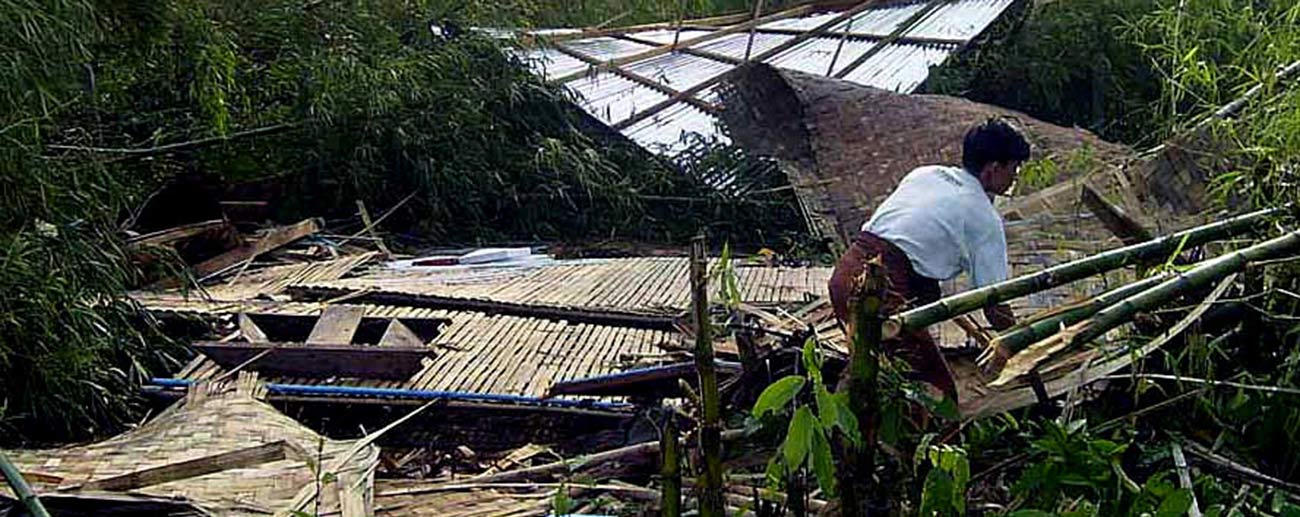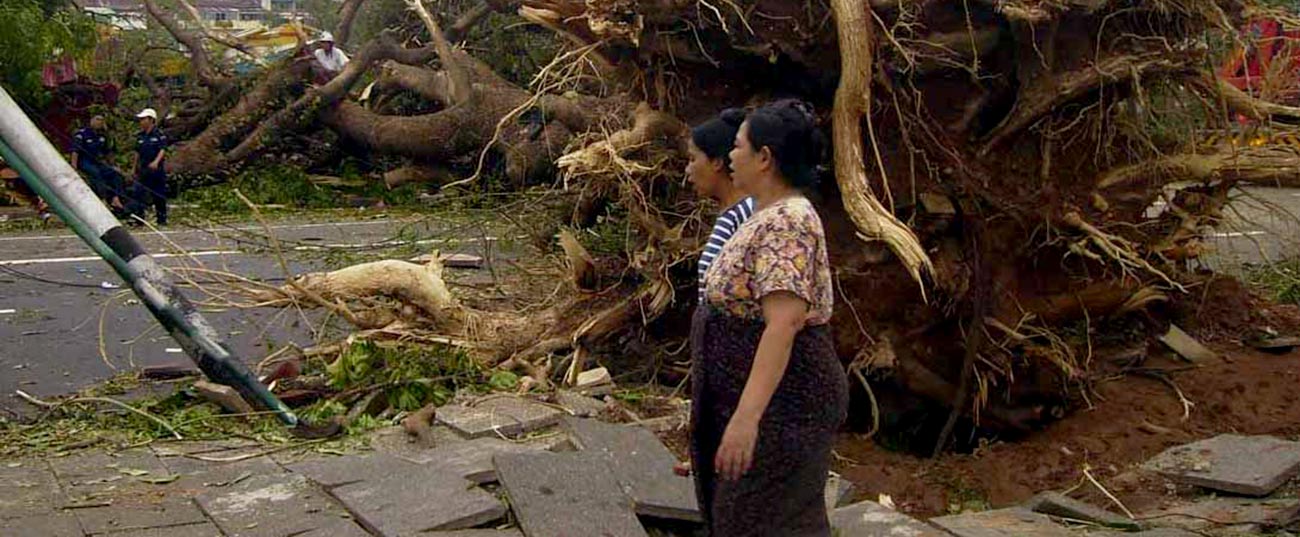
The pump was still working post Nargis
|
Cyclone Nargis named with the Urdu word for daffodil was a rare, eastward moving at low-latitude tropical cyclone that caused the worst natural disaster in the recorded history of Myanmar. The cyclone made landfall in Myanmar on Friday, 2 May 2008, sending a storm surge 40 kilometers up the densely populated Irrawaddy delta , causing catastrophic destruction. The Junta capped the official death count at 138,000 fatalities for fear of criticism . Damages of (US$10 billion), made it the most damaging cyclone ever recorded in the region Letter and Photos from Joytish "Hello Friends |


